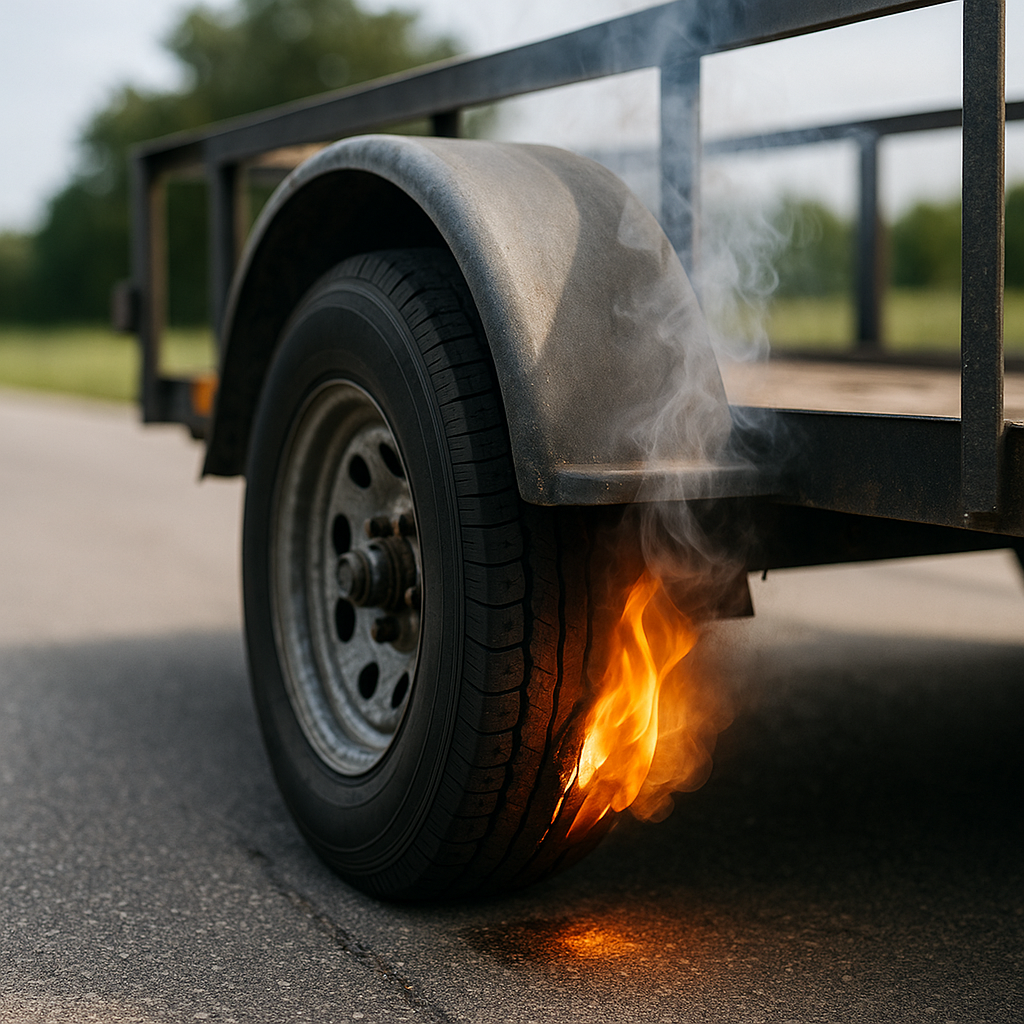Maintaining optimal tire pressure is crucial for both safety and efficiency when it comes to trucks and trailers. A tire pressure monitoring system truck and trailer serves as an essential tool for vehicle operators, providing real-time data that can prevent dangerous situations. Understanding the importance of these systems can significantly impact the longevity of your tires and the overall performance of your vehicle.
When tires are under-inflated, they can lead to a myriad of issues, including:
- Increased tire wear: Tires that are not properly inflated wear out faster, leading to premature replacements.
- Reduced fuel efficiency: Under-inflated tires can increase rolling resistance, causing the engine to work harder and consume more fuel.
- Higher risk of blowouts: Insufficient tire pressure can cause overheating, resulting in dangerous tire blowouts.
Conversely, over-inflated tires may lead to reduced traction and a harsher ride. A tire pressure monitoring system helps mitigate these risks by alerting drivers to any abnormal tire pressure, allowing for timely adjustments.
By integrating a tire pressure monitoring system into your trailer, you can enhance safety and efficiency, ensuring a smoother ride while minimizing the risk of breakdowns. Tow with peace of mind, knowing that trailerwatchdog is standing guard. For more information, visit trailerwatchdog.com.
Key Features of Effective Tire Pressure Monitoring Systems
When selecting a tire pressure monitoring system for your truck and trailer, it’s essential to understand the key features that contribute to its effectiveness. A robust tire pressure monitoring system truck and trailer can make a significant difference in both safety and performance. Here are some critical features to consider:
- Real-time monitoring: Effective systems provide continuous monitoring of tire pressure, delivering instant alerts if any tire falls below or exceeds the recommended pressure levels.
- Wireless connectivity: Many modern systems utilize wireless technology, allowing for easy installation and the ability to transmit data to a smartphone or vehicle display without cumbersome wiring.
- Temperature monitoring: Tire temperature can significantly impact performance. Reliable systems not only monitor pressure but also keep track of tire temperature, enabling drivers to take action before problems arise.
- Alerts and notifications: Advanced systems offer customizable alerts that notify drivers of tire issues through audible alarms, visual indicators, or even mobile notifications, ensuring that potential problems are addressed quickly.
- Durability and weather resistance: The ideal system should be built to withstand harsh conditions, including extreme temperatures and exposure to road debris, ensuring consistent performance regardless of the environment.
By focusing on these key features, you can select a tire pressure monitoring system that enhances the safety and efficiency of your truck and trailer, ultimately leading to a smoother and more reliable towing experience.
How Tire Pressure Monitoring Systems Function

Understanding how tire pressure monitoring systems function is crucial for anyone looking to enhance the safety and efficiency of their truck and trailer. These systems operate through a combination of sensors, data processing units, and user interfaces to provide real-time information about tire conditions. Here’s a breakdown of the process:
- Sensor technology: Each tire is equipped with a pressure sensor, either installed inside the tire or externally mounted. These sensors continuously measure the tire's air pressure and temperature, ensuring accurate readings.
- Data transmission: The collected data is transmitted wirelessly to a central monitoring unit or display. This communication often utilizes RF (Radio Frequency) technology, allowing for seamless transmission without the need for complex wiring.
- Data analysis: The monitoring unit processes the incoming data, comparing it against pre-set thresholds for both pressure and temperature. If the readings deviate from the norm, the system triggers alerts.
- User alerts: When a tire's pressure is too low or too high, the system generates visual and/or audible alerts, notifying the driver of the issue. Some advanced systems may also send notifications to a mobile app for added convenience.
- Maintenance alerts: In addition to real-time monitoring, many systems also provide insights and alerts for regular maintenance checks, helping to keep tires in optimal condition and prevent premature wear.
This combination of sensor technology, real-time data analysis, and proactive alerts ensures that drivers are well-informed about their tire conditions, significantly reducing the risk of breakdowns and enhancing overall safety on the road.
Benefits of Tire Pressure Monitoring for Trucks and Trailers

The implementation of a tire pressure monitoring system for trucks and trailers offers numerous advantages that significantly enhance vehicle performance and safety. Here are some of the key benefits:
- Improved safety: Maintaining the correct tire pressure can prevent blowouts and accidents. A tire pressure monitoring system alerts drivers to dangerous pressure levels, allowing for timely corrective action.
- Enhanced fuel efficiency: Properly inflated tires reduce rolling resistance, which can lead to improved fuel economy. Studies show that maintaining optimal tire pressure can increase fuel efficiency by as much as 3%, contributing to significant cost savings over time.
- Extended tire lifespan: Consistent monitoring helps prevent uneven tire wear, which can lead to premature tire replacement. By ensuring tires are always at the correct pressure, the lifespan of the tires can be extended, saving money on replacements.
- Increased load capacity: Tires that are inflated to the proper pressure can handle loads more effectively. This ensures that trucks and trailers can operate at their maximum capacity safely without risking tire failure.
- Reduced downtime: By preventing tire-related failures, a tire pressure monitoring system minimizes unexpected breakdowns, thus enhancing overall operational efficiency. This is particularly important for commercial fleets where time is money.
- Environmental benefits: Efficient tire management reduces the carbon footprint by improving fuel efficiency and minimizing waste from prematurely discarded tires.
Incorporating a tire pressure monitoring system is not just a matter of convenience; it is a proactive approach to vehicle maintenance that can lead to safer roads and more economical operations.
Choosing the Right Tire Pressure Monitoring System

Selecting the right tire pressure monitoring system (TPMS) for your truck and trailer is crucial to ensure optimal performance and safety. With various options available on the market, it's essential to consider several factors before making a decision:
- Compatibility: Ensure that the TPMS you choose is compatible with your specific truck and trailer models. Some systems are designed for specific vehicle types, while others can be universal.
- Sensor type: TPMS can come with either internal or external sensors. Internal sensors are mounted inside the tire, providing more accurate readings but may require professional installation. External sensors are easier to install but may be less accurate and vulnerable to damage.
- Real-time monitoring: Opt for a system that offers real-time monitoring and alerts. This feature allows you to receive instant notifications about tire pressure changes, enabling you to take immediate action.
- Display options: Consider how the data is displayed. Some TPMS units feature a dedicated display, while others can connect to your smartphone or GPS device. Choose one that fits your preferences for ease of use.
- Range and battery life: Check the range of the TPMS to ensure it can effectively monitor all your tires, especially if you're using a larger trailer. Also, consider the battery life of the sensors to avoid frequent replacements.
- Cost and warranty: While it may be tempting to go for the cheapest option, investing in a reliable system can save you money in the long run. Look for systems with warranties that provide added assurance of their durability and reliability.
By carefully evaluating these factors, you can select a tire pressure monitoring system that meets your needs and ensures the safety and efficiency of your truck and trailer.
Integrating Tire Pressure Monitoring with Trailer Systems

Integrating a tire pressure monitoring system (TPMS) with your trailer systems can significantly enhance overall safety and efficiency while on the road. Modern trailers often come equipped with various technologies, and adding a TPMS can create a more cohesive and intelligent monitoring environment. Here are some key benefits and considerations for integrating TPMS with your trailer systems:
- Centralized Monitoring: By integrating TPMS with existing trailer systems, drivers can access all critical data from a single dashboard. This approach simplifies monitoring and allows for immediate action if tire pressure issues arise.
- Enhanced Safety Features: When integrated with other safety systems, such as brake monitoring and load sensors, the TPMS can provide a comprehensive overview of the trailer’s operational status, further reducing the risk of accidents.
- Data Analytics: Many advanced TPMS solutions offer data analytics capabilities. When integrated with other trailer systems, this data can help identify patterns, predict maintenance needs, and optimize trailer performance over time.
- Real-time Alerts: Integration allows for real-time alerts to be sent directly to the driver’s mobile device or dashboard display, ensuring that any tire pressure issues are addressed promptly.
- Streamlined Maintenance: A unified monitoring system helps streamline maintenance schedules, as all relevant data can be accessed in one place, making it easier to track tire health and perform timely checks.
To maximize the benefits of tire pressure monitoring, consider a system that seamlessly integrates with your existing trailer technologies. This can provide invaluable insights and enhance your peace of mind on the road.
Tow with peace of mind, knowing that trailerwatchdog is standing guard.








